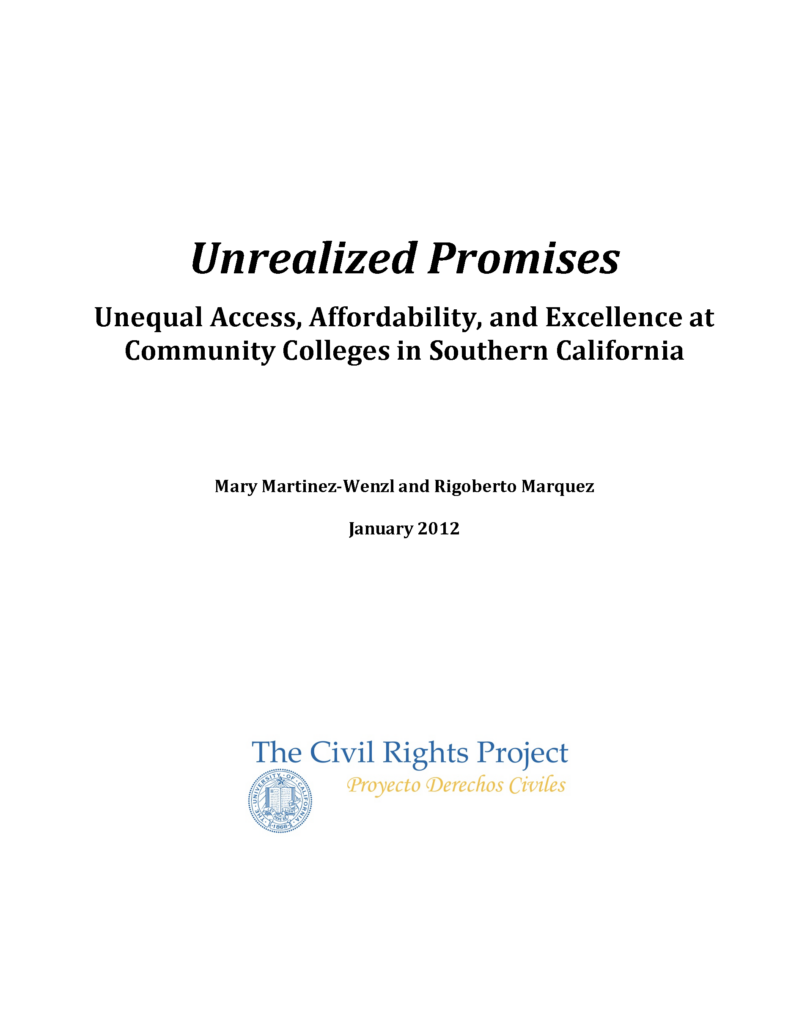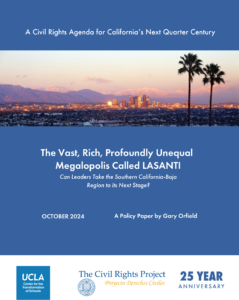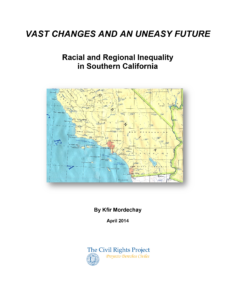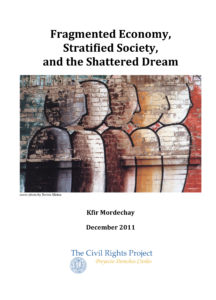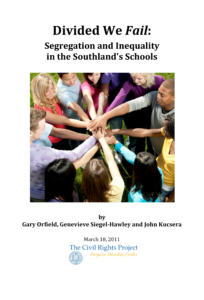In California, community colleges have long played a central role in the state’s higher education system. Dating back to the 1960 Master Plan, all California students have supposedly been assured of access to higher education. Community colleges were slated to carry the largest portion of the load, responsible for educating and then either graduating or transferring two‐thirds of the state’s aspirants to a post‐secondary degree. Extraordinarily severe funding cuts (and the accompanying rise in fees) will, of course, do little to make good on that long‐standing promise.
During a time of serious demographic transition, the state can ill afford to backpedal on its pledges to a rising generation of black and Latino youth, who are very disproportionately concentrated in the community college system. These students will make up a majority of California’s work force in short order. Without access to higher education, the educational trajectory of multitudes of students will be tragically stunted, and the state’s economic engine will continue to sputter.
Beyond providing the basic funding and infrastructure to sustain enrollment in community colleges, California must work to ensure that the programs are working to transfer and/or graduate degree‐seeking students. A report last fall, from the Institute for Higher Education Leadership and Policy, gave notice that the community college system is falling far short of these commitments: fully 70% of California’s community college students are not successfully transferring to 4‐year institutions within six years. Both external and internal challenges, then, threaten to extinguish the possibilities of an absolutely essential element of California’s higher educational system.
This paper is part of the LASANTI Project, which explores many dimensions of social and economic change and inequality across the huge bi-national urbanized complex, stretching from the northern Los Angeles suburbs down through San Diego, to the Tijuana metropolitan area.
See a full description of The Lasanti Project here.
In compliance with the UC Open Access Policy, this report has been made available on eScholarship:
